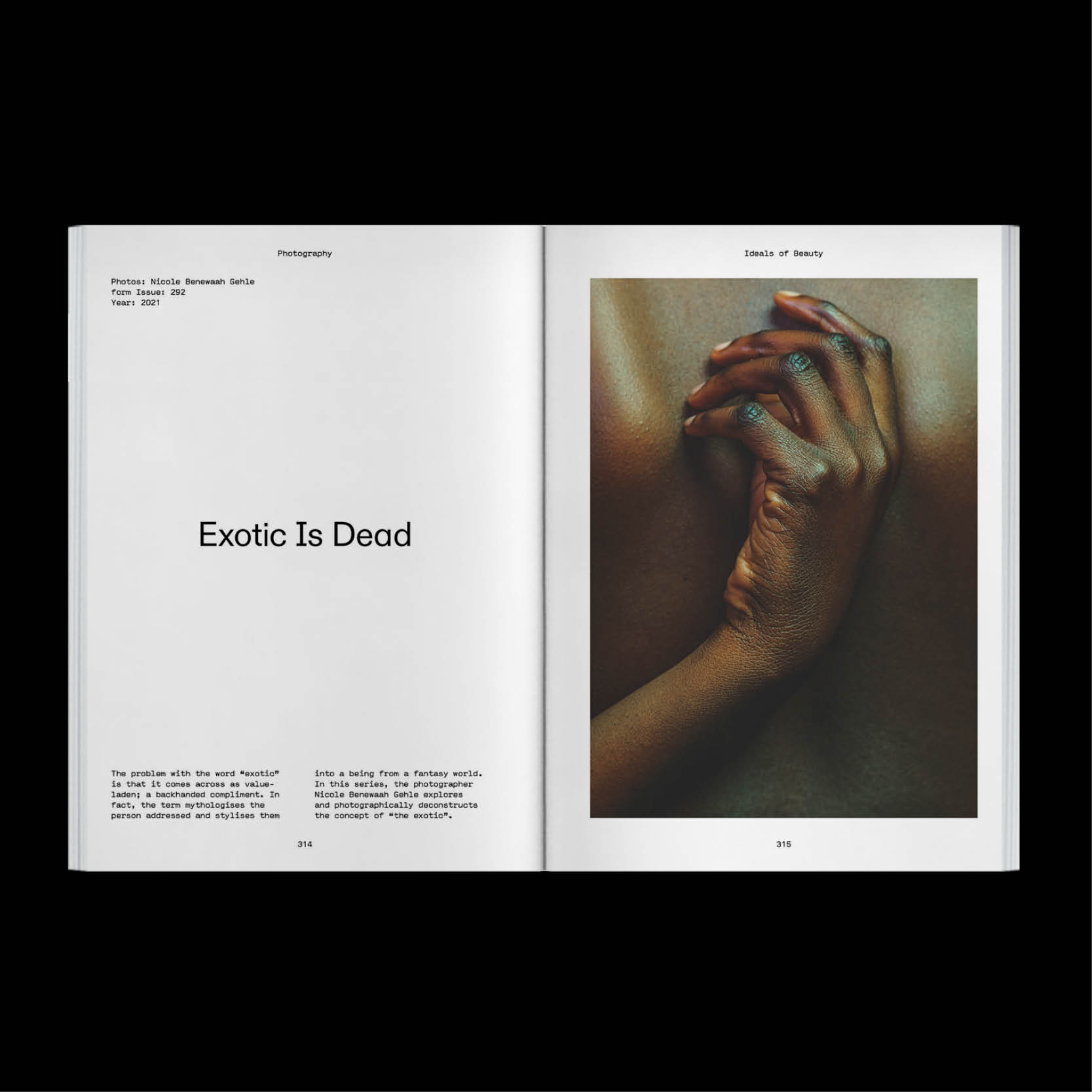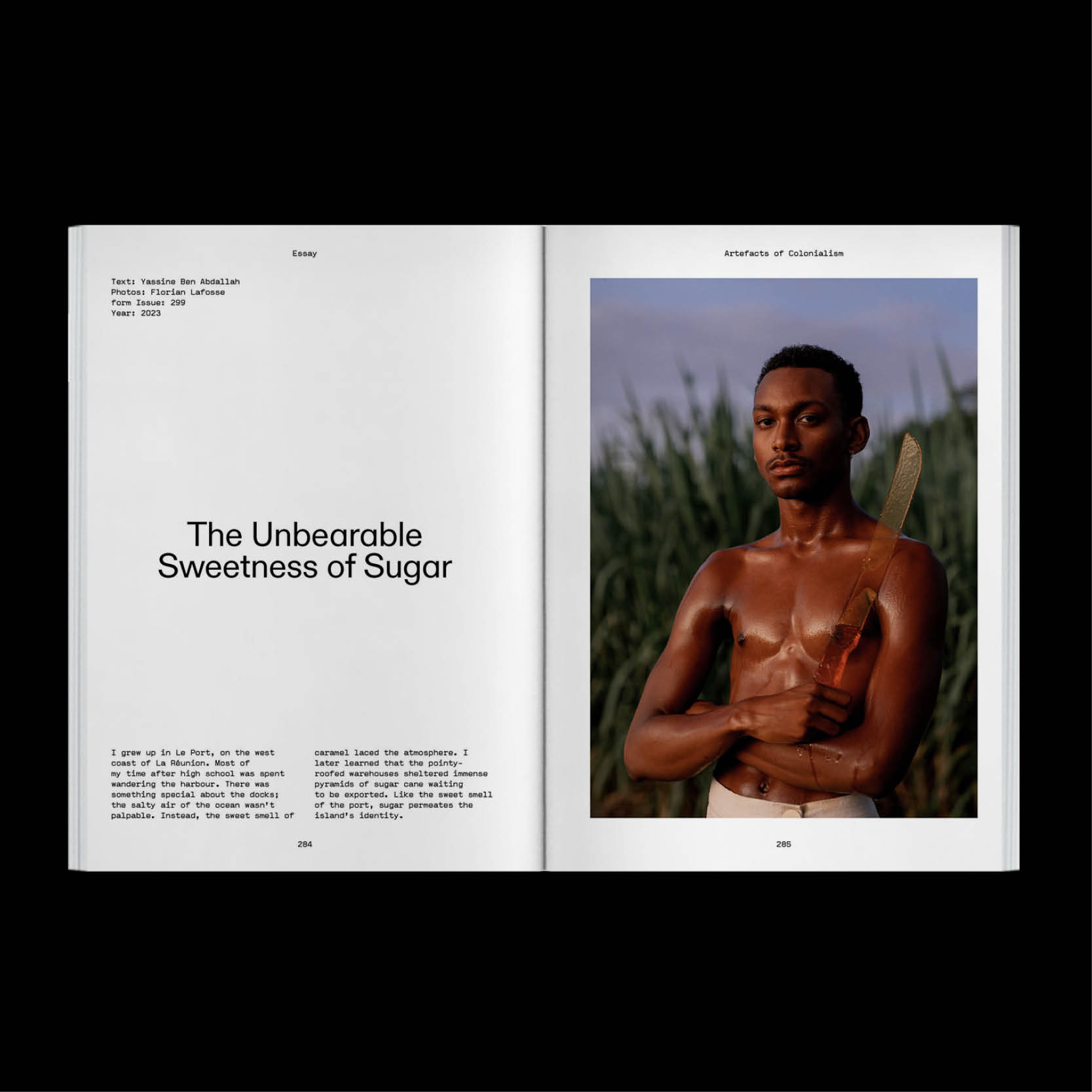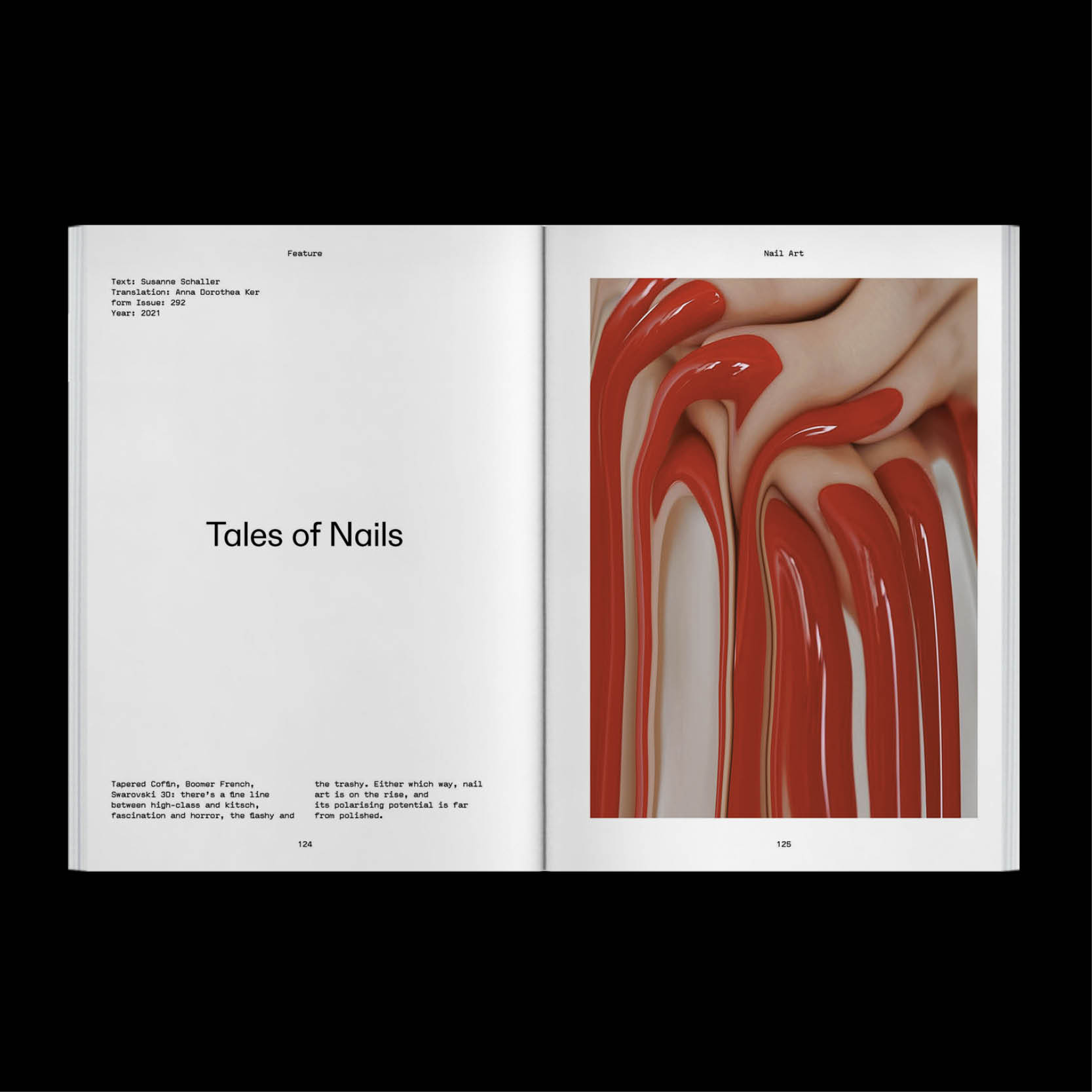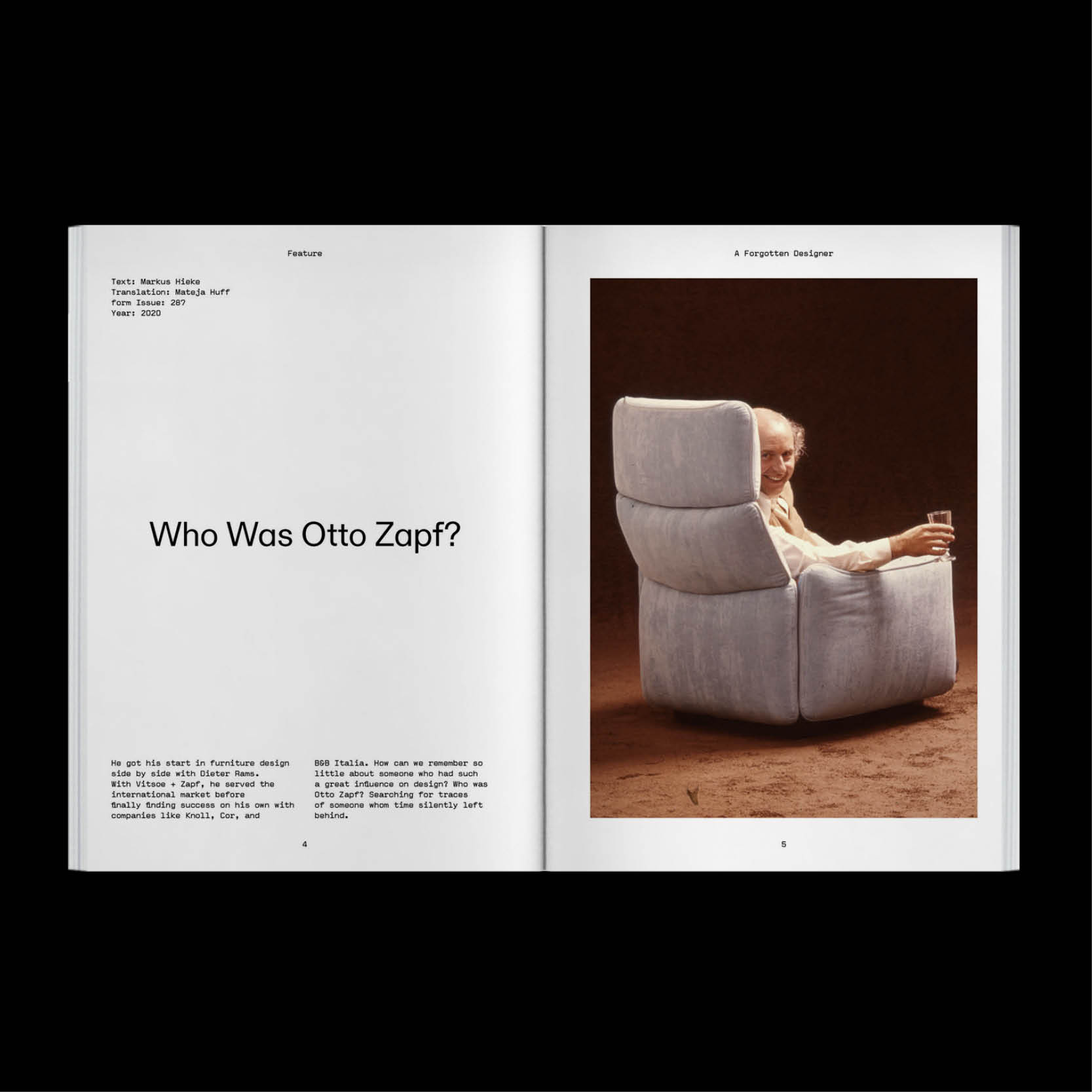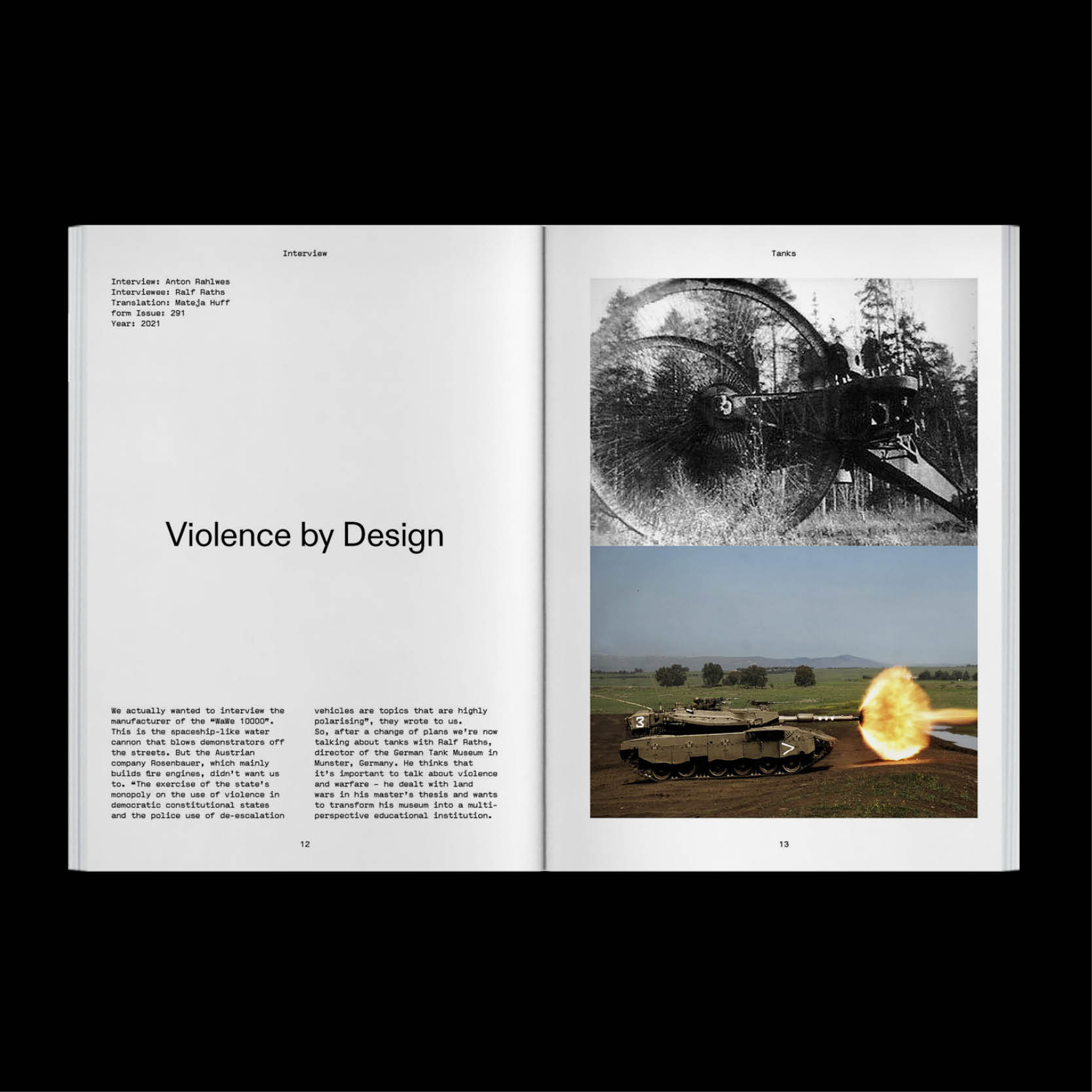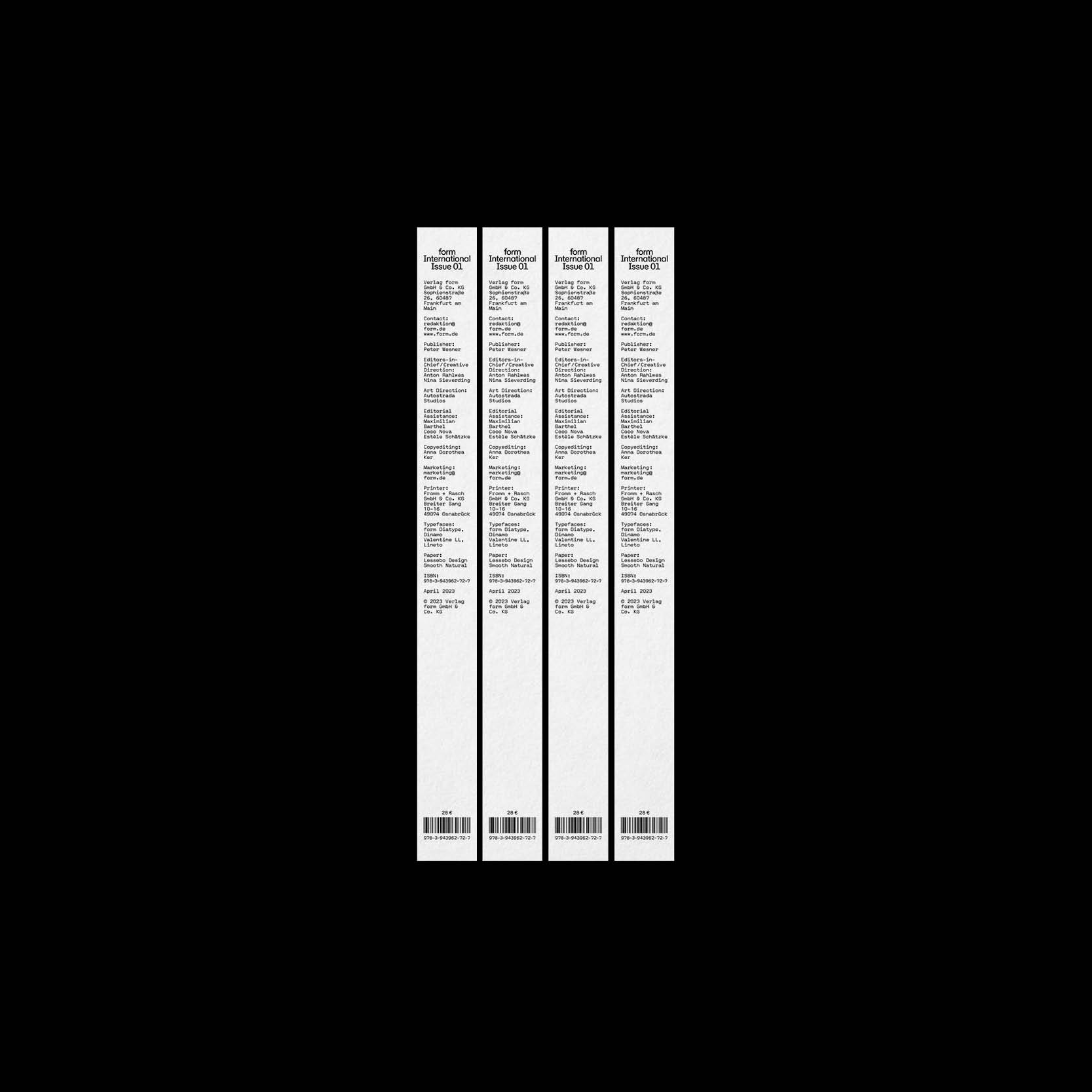
Form International Issue 01
Germany’s oldest design magazine Form releases its first all-English issue. It will be launched at Milan Design Week 2023 at two locations, alongside two exhibitions and a talk.
About Form International Issue 01
A subject like design deserves to have as many people talking about it as possible. Why? Design is fundamentally connected to being human. Designed things serve as emotional mirrors or practical aids – and they influence ecological as well as social contexts. This issue contains 35 contributions, published in the last three years of German Form Magazine, that critically address these topics in one way or another. Among them are essays, features, and photographic works that bring an important perspective to design. From decolonisation to feminist or queer topics, we’ve included a broad range of contemporary and progressive perspectives on design. Media theory is given as much space as artistic or activist positions. New fields such as bio- or gender design are on an equal footing with classic product or graphic design.
Contents
“Magazine for discourse and design” is Form’s claim and we remain true to it with this International Issue. From decolonisation to feminist or queer topics, we’ve included a broad range of contemporary and progressive perspectives on design.
The Form International Issue 01 features, among others, the food designer Marije Vogelzang, the stylist Julie Pelipas, the Institute for Postnatural Studies, the biodesigner Natsai Audrey Chieza, gender design expert Uta Brandes, the Berlin-based studio Ertl und Zull, the director of the German Tank Museum and the Japanese social design studio Nosigner. Also: the forgotten designer Otto Zapf, colonial artefacts of La Réuion, industrial design in the German Democratic Republic, feminism and technologies, non-human design, ableism, forest fires, beauty standards, fans, the history of the baking pan, the bachelor pad, the handaxe and many more.
About Form
Form is the oldest German design magazine. It was founded in 1957 by Jupp Ernst, Willem Sandberg, Curt Schweicher and Wilhelm Wagenfeld and has established itself as one of the leading magazines in the field of critical design journalism. Since 2020, it is lead by designers and journalists Anton Rahlwes and Nina Sieverding. Since 2021, Berlin-based Autostrada Studios is responsible for the magazine’s art direction.
Design
Creative Direction: Anton Rahlwes & Nina Sieverding
Art Direction: Max Pietro Hoffmann
Weblog
Kreative Arbeitsumgebungen: Wie Büros das Design beeinflussen
Die Rolle von Licht in der modernen Architektur
Licht, Linie, Leichtigkeit: Wie man Räume schafft, die eleganten Luxus nicht nur zeigen, sondern spürbar machen
Von der Idee zur Wirkung: Kreative Werbemittel als Erfolgsfaktor für Unternehmen
Geheimwaffe Geruch: Wie Düfte unser Denken beeinflussen
Der Jobwechsel und seine Tücken – so vermeiden Sie sie
Zwischen Haptik und Storytelling: Die Verpackung als multisensorisches Erlebnis
Jenseits der großen Namen: Die Kunstszene der Zukunft entdecken
Die Kunst hinter dem Design
Günstige Zimmer in Dresden – für Monteure und Handwerker
Designs zum Leben erwecken: Die Kunst der Lasergravur Einleitung
Moderne Designprinzipien: Die Grundlagen für eine gelungene Gestaltung
Design-Trends 2025: Was erwartet kreative Köpfe in Deutschland?
Design: Bedeutung(en) eines Begriffs in der deutschen Wirtschaft
Anbau von Cannabis Samen – die Einsatzzwecke sind vielseitig


